What Does a Cavity Look Like at Every Stage? (with Pictures)

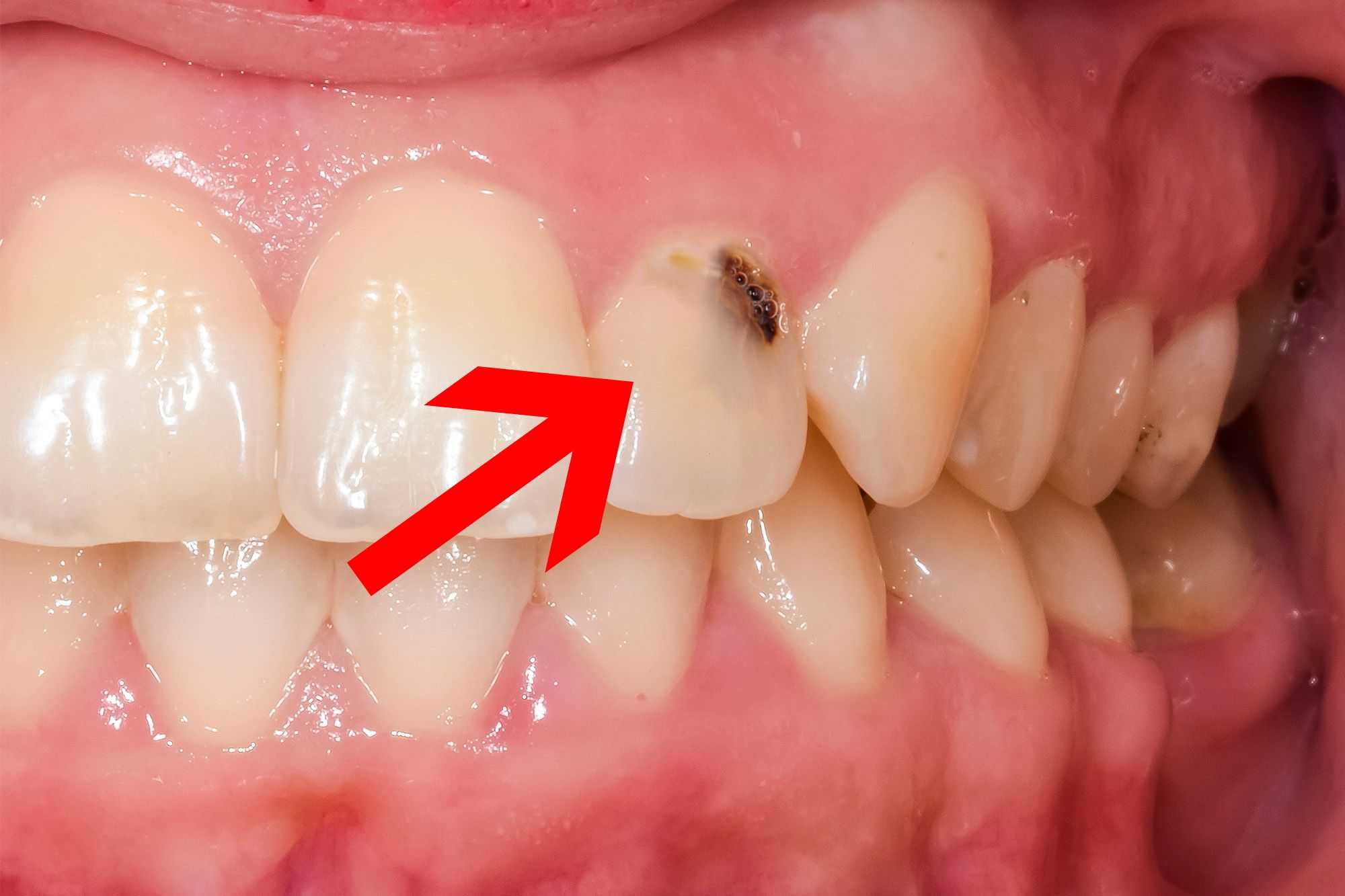
What do cavities look like? Why is it that it’s possible to go into a dentist’s office and have them tell you that there’s a cavity in your tooth, but you don’t see (or feel) a single thing? Can you see cavities or dental caries, what do they actually look like?
Since tooth decay tends to fall into “stages” of cavities—some of which are visible while others aren’t—understanding the development of tooth decay can help you feel more comfortable talking to your dentist about their treatment recommendations.
What Is A Cavity?
Cavities form because of erosion in the outer layer of tooth enamel. That erosion is caused by germs (dental plaque) which secrete acid byproducts (germ poop) whenever they break down food particles. These acids etch away at your tooth enamel until they create a hole in it.
Thankfully, cavities are preventable when you clean your teeth well enough to remove those plaque particles every day. That means brushing at least twice a day for two minutes and flossing between every tooth, every day. When you disrupt the dental plaque, you prevent the acids from wearing through your enamel and creating a cavity.
Related: Free Oral Hygiene Routine Guide
What Color Are Cavities?
Unfortunately, once you can actually see a cavity and tell what color it is, you’re probably looking at a more moderate to severe stage of tooth decay.
What Do Cavities Look Like?
Most of the time when a dentist sees a cavity, it’s a shadow on your dental X-ray. Other times, it’s possible to see small developing tooth decay on teeth when the tooth feels “sticky” and has small areas of staining on the chewing surfaces of your back teeth. Cavities on smooth surfaces are less common, but they’re typically right next to your gums (gumline cavity)and the enamel looks whitish or brown. The more advanced the decay is, the different it looks from the previous stage.
Stages of Tooth Decay and What They Look Like
Here are the different stages and pictures of dental cavities shown below.
1. Pre-Cavity (Demineralization)
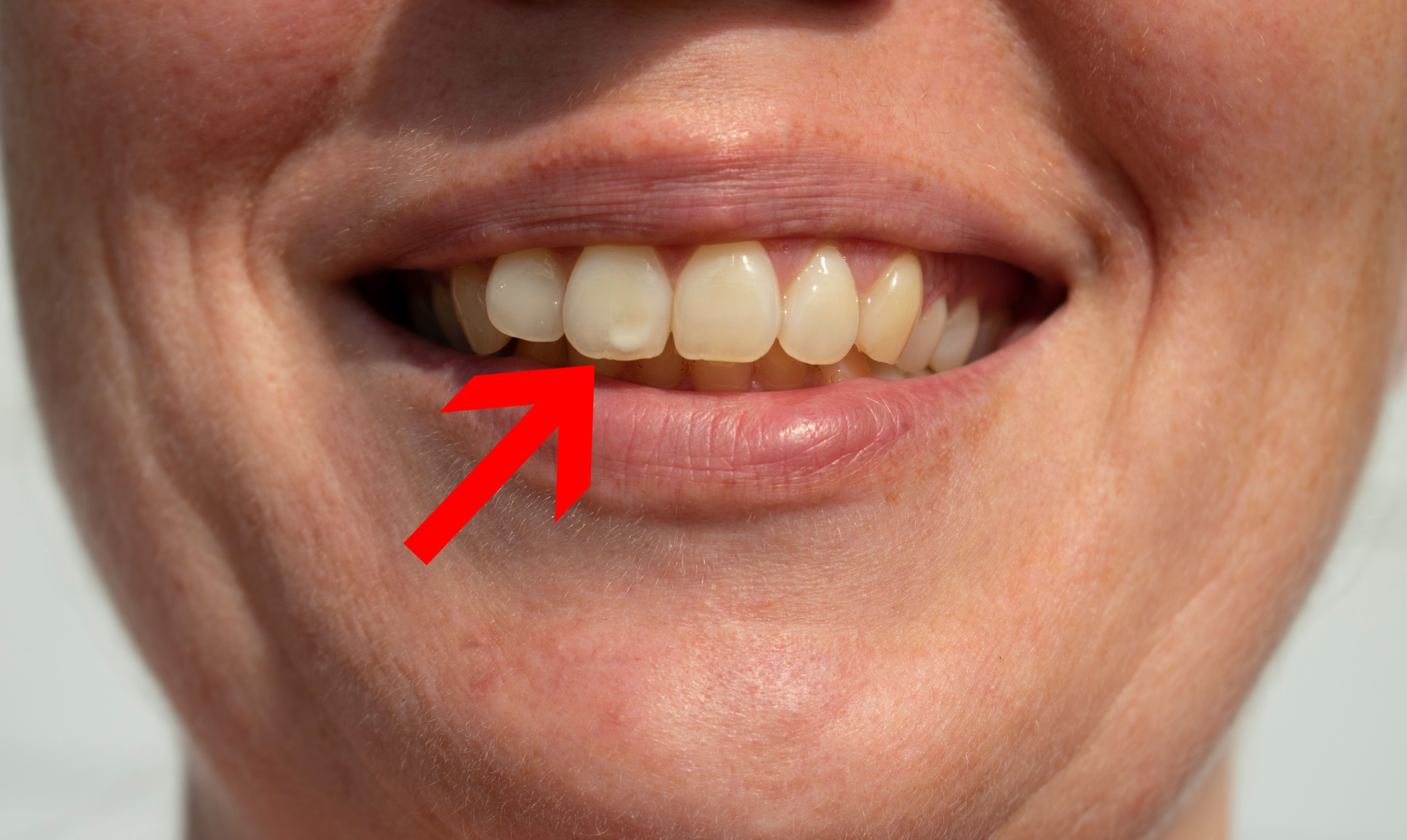
Demineralization is the earliest stage of tooth decay before a physical cavity or hole forms in your tooth. This early stage of pre-decay is when the enamel is beginning to dry out or demineralize because of acidic plaque bacteria.
These pre-cavities are almost always whiter than the tooth enamel around them. A classic example is white spots on teeth after someone’s braces have been removed, where they didn’t clean away all of the dental plaque around their orthodontic brackets.
Thankfully, enamel demineralization can be reversed and the cavity can be “stopped” from forming if you intercept it at this stage of decay.
2. Early Stage Cavity or Tooth Decay
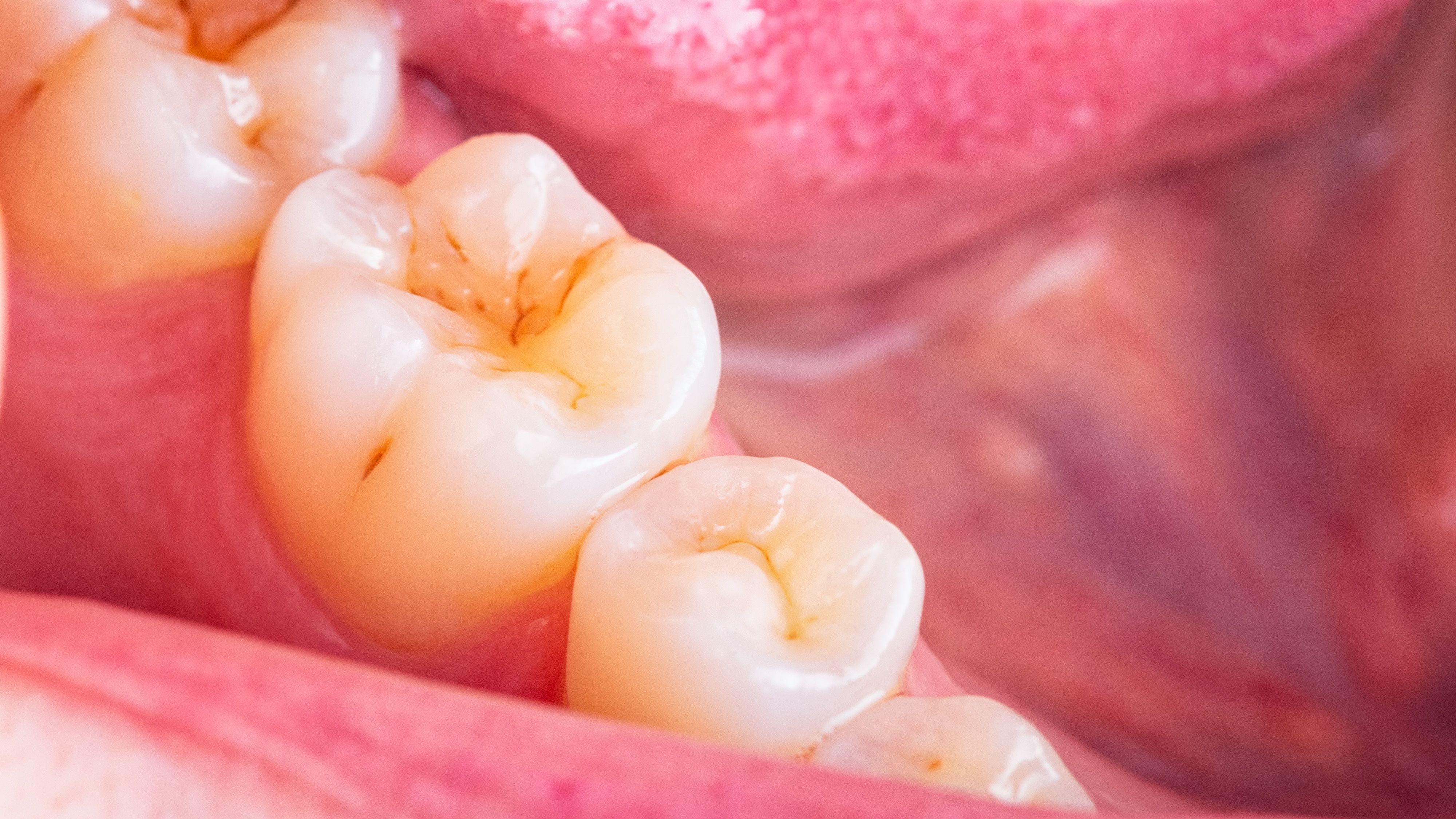
One of the earliest cavities dentists can see on teeth are those that form on the chewing surfaces of molars and premolars (bicuspids) in the tiny pits or crevices that are there. These extremely small holes may be so tiny that even a toothbrush won’t be able to clean them. Instead, your dentist will use a thin explorer to feel the surface of your tooth and check for “sticking” where the instrument catches inside of the hole. If there’s brown discoloration, it might just be stain buildup. Chances are you won’t be able to see the cavity without an enlarged intraoral photo or if the cavity is large enough to see on an X-ray.
Since dental X-rays typically only show about 2/3 to 3/4 of the cavity, it’s possible for there to be a small area of tooth decay even if it’s not visible on your X-rays yet. Namely, because it’s still isolated in the thicker, outer layers of tooth enamel (which is good, because it means it hasn’t broken through to the softer inner dentin layer just yet.)
3. Tooth Decay Between Teeth
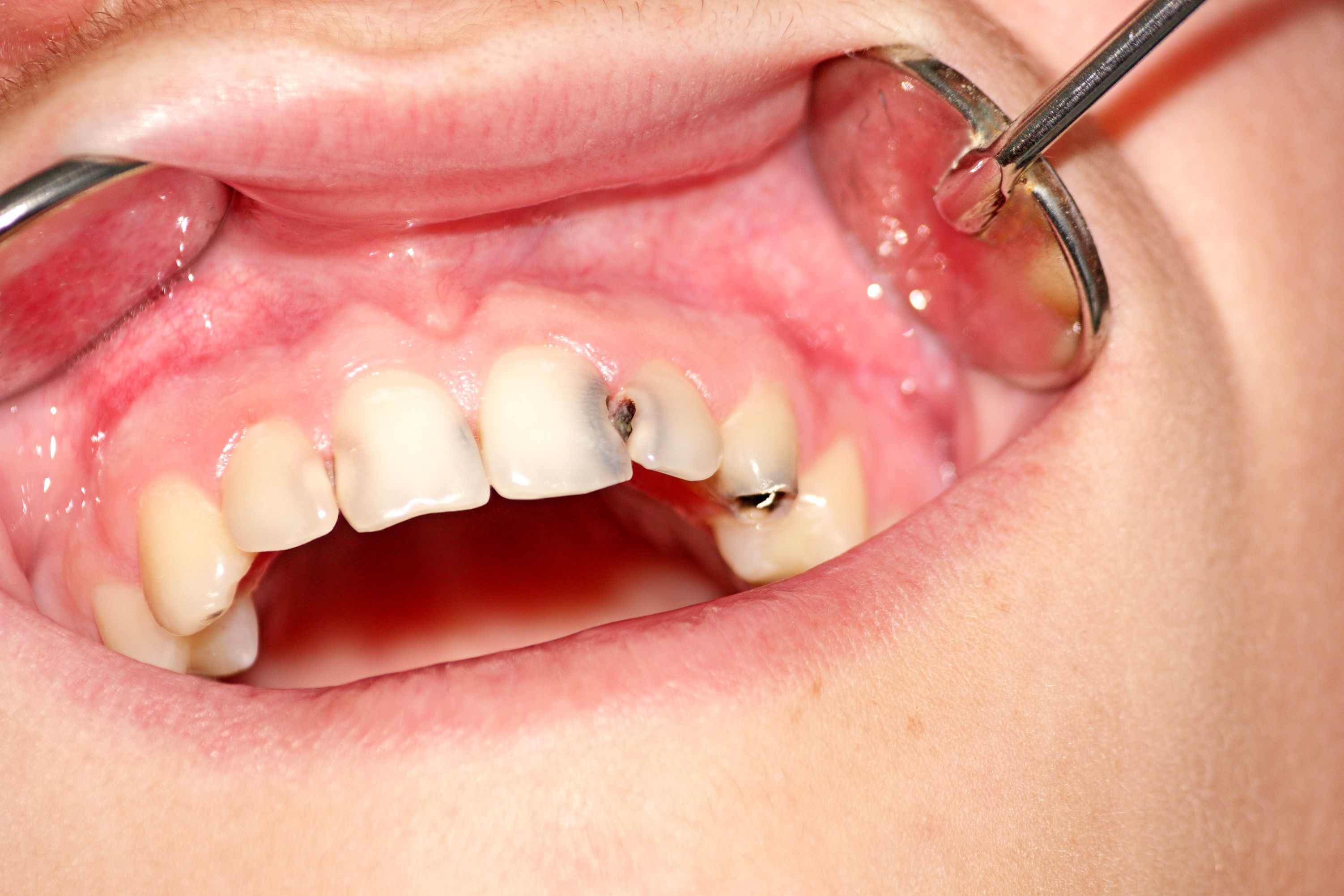
Cavities between teeth tend to show up as dark triangular or conical-shaped shadows on your dental X-rays. Since cavities between your teeth are impossible to see with the naked eye, your dentist needs X-rays to screen for tooth decay in those spaces. Food particles can get trapped between the gums and teeth, potentially causing bleeding gums and possibly leading to gum disease.
As cavities between teeth start to expand, those triangular shapes will reach the next layer of the tooth and then become significantly larger shadows deeper inside the tooth, due to the softer nature of that layer of tooth structure.
4. Cavity On A Front Tooth

If you have a cavity on a front tooth, you’ll probably first notice a change in the tooth shape. It may be that there are small openings between your teeth or rough areas just next to the gum tissues. Running a piece of floss between your tooth may cause it to catch, shred, or snap in two.
Again, these cavities tend to look white at first, then take on a yellow or brown appearance. Simply seeing a black spot on your front teeth doesn’t mean there’s a cavity; it might just be tooth stain or tartar that your hygienist needs to clean off.
5. Cavity On A Molar or Wisdom Tooth
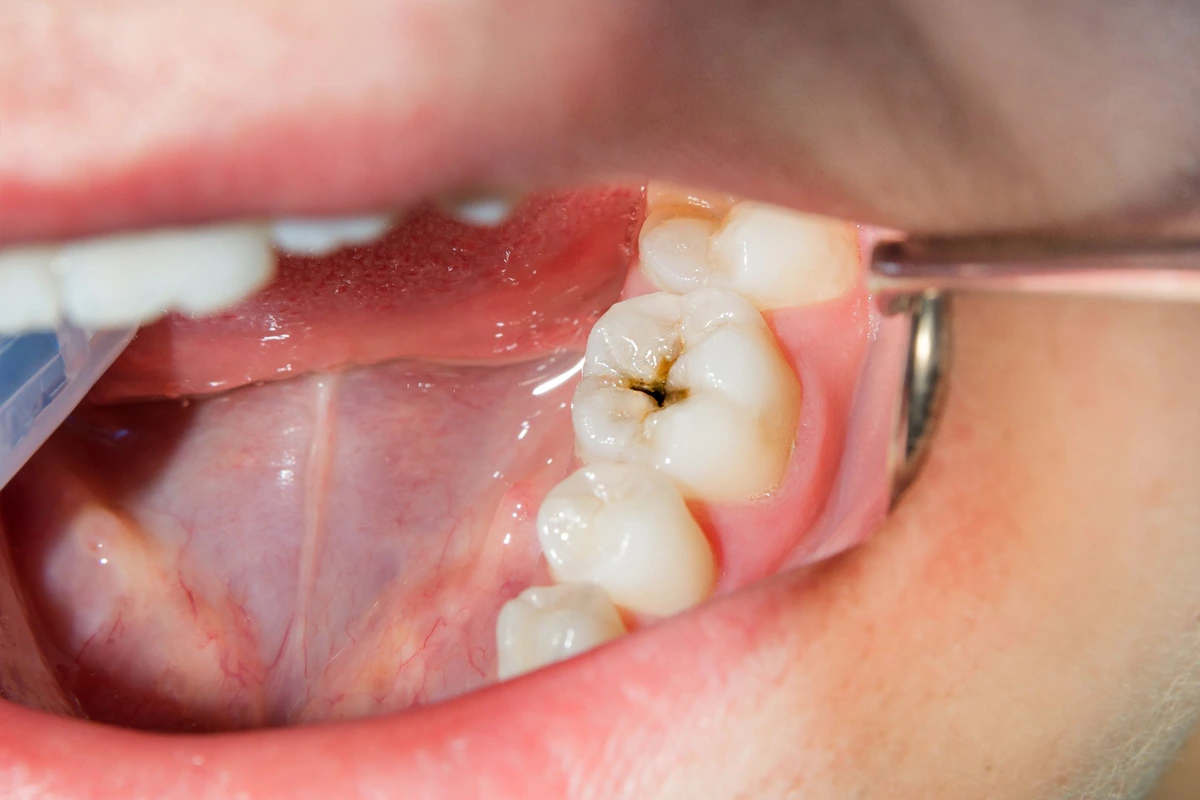
Molar (back teeth) cavities are a lot harder to spot on your own because of how far back those teeth are in your mouth. Most molar cavities are going to be either on the chewing surface in the grooves and pits of the tooth or between your teeth. That means it’s almost impossible to know you have one without your dentist checking your tooth and/or taking X-rays of it during your checkup. Even if you see a brown area, it might just be stain down inside of the grooves.
If you feel food getting caught in your back teeth or have floss that shreds in certain areas, there’s probably a 50/50 chance you have a cavity in that molar.
6. Baby Teeth Cavity
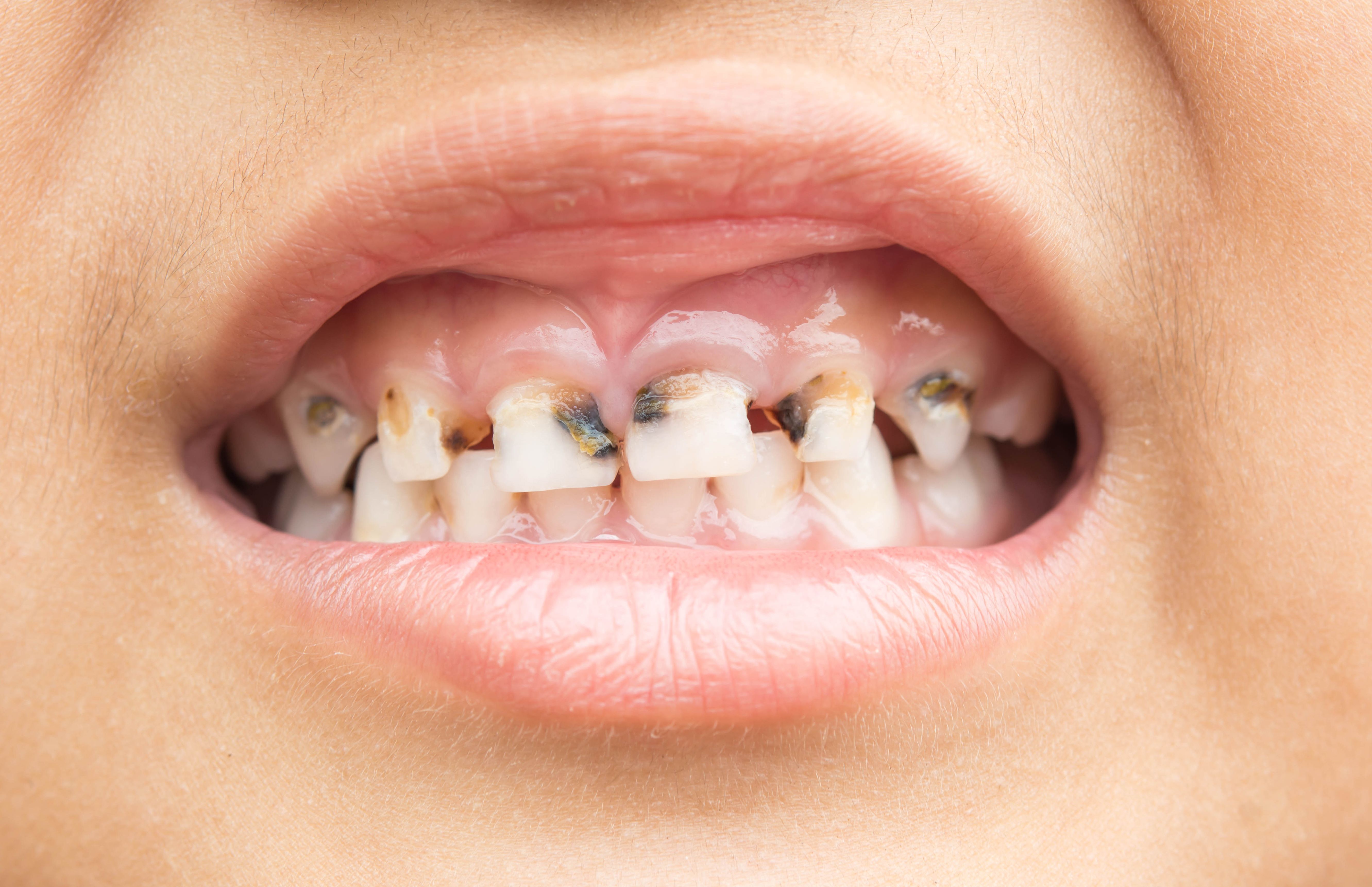
Any baby, infant, or toddler with teeth is at risk of getting cavities. Sadly, tooth decay in primary or baby teeth can spread extremely quickly. As in quicker than permanent teeth (adult teeth). Since baby teeth aren’t as dense as their permanent counterparts are, any areas of erosion or demineralization can quickly evolve into a cavity. If that cavity isn’t treated promptly, it will spread deeper into the tooth and cause a dental abscess. Not to mention “jump” to adjacent teeth.
What Does A Bad Cavity Look Like?
Advanced stage cavities or “gross caries” is when you have such a severe area of tooth decay that you can visibly see hollowed-out areas inside of your tooth. You probably get food caught in it, feel rough edges with your tongue, or there are parts of your tooth breaking off when you bite down on it.

If you were to look at a bombed-out cavity on a dental X-ray, the shadow created would probably come pretty close to the nerve in the middle of your tooth. And if you don’t already have a dental abscess, you’re probably days or weeks away from getting one.
Stages Of Tooth Decay
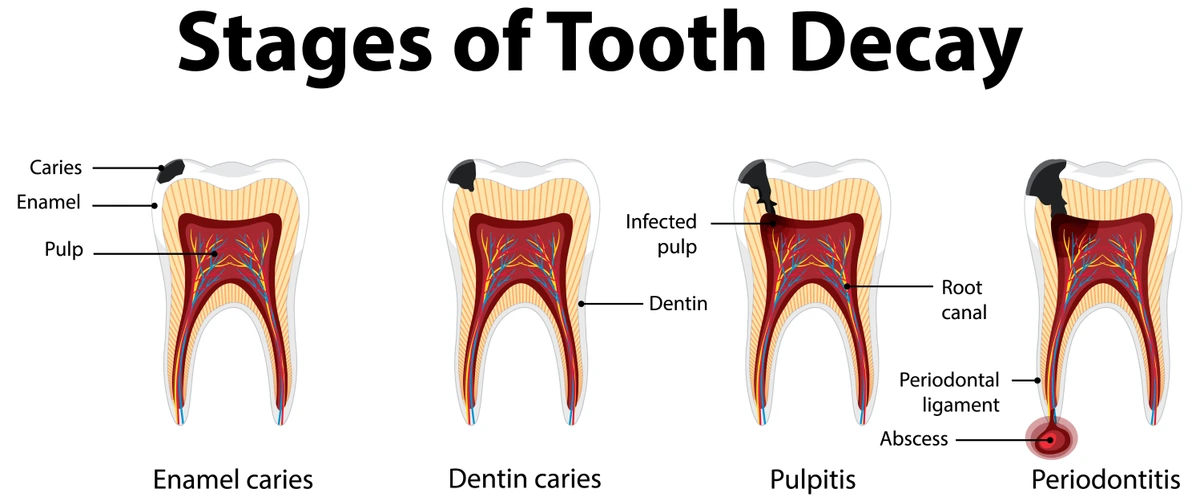
Normally whenever we talk about cavities on teeth, we classify them into one of four stages:
1. Demineralization
2. Tooth Enamel Decay
After a hole forms in the tooth, you want to catch the decay while it’s still in the outermost layer of your tooth enamel. That’s because the enamel is extremely dense and the treatment is still minimally invasive. When left untreated, decay will continue to grow until it reaches the dentin layer of the tooth.
3. Dentin Decay
If a cavity goes untreated it will eventually rupture through the enamel and into the next layer of the tooth, called the dentin. At this point, the cavity needs to be treated quickly because it will spread quite fast.
4. Nerve Involvement
Untreated cavities that make their way through the dentin will ultimately become so “deep” that they come into contact with the nerve in the middle of the tooth. At this point, a root canal will be mandatory to avoid tooth loss. Dental implants and other options are recommended for any missing tooth.
How Do I Spot Cavities On My Teeth?
I can say in full confidence that you really can’t catch a cavity by yourself, so you need to see a dentist for regular checkups. Even knowing what cavities look like, they often start in places that are visibly impossible to see without X-rays or feel with special tools. Thankfully, your dentist can spot cavities at the earliest stages so that you can get a small cavity filling instead of something major like a crown or root canal.
Symptoms of Cavity
The symptoms of a cavity will depend on the stage and which tooth. Sometimes you have zero symptoms with cavities and you can only see them on dental X-rays. Some symptoms of worsening tooth decay include:
- Sudden tooth pain or a toothache
- Sensitive teeth
- Discolored or dark spots
- Bleeding gums
- Bad breath
- Pain when eating sugary foods
- Gum disease
Severe tooth decay develops when a number of permanent teeth experience cavities that advance to a state beyond repair. This severe tooth decay can happen gradually over time, quickly on the surfaces used for chewing, or in the spaces between teeth. Cavities that are deep and located on the molars can lead to pain or infection.
What Does A Cavity Look Like On An X-Ray?
Cavities are what we call “radiolucent” on dental X-rays. In other words, the X-ray beams go right through them because of the loss of density. When the X-ray comes out, that equates to a large shadow or dark area on the tooth.
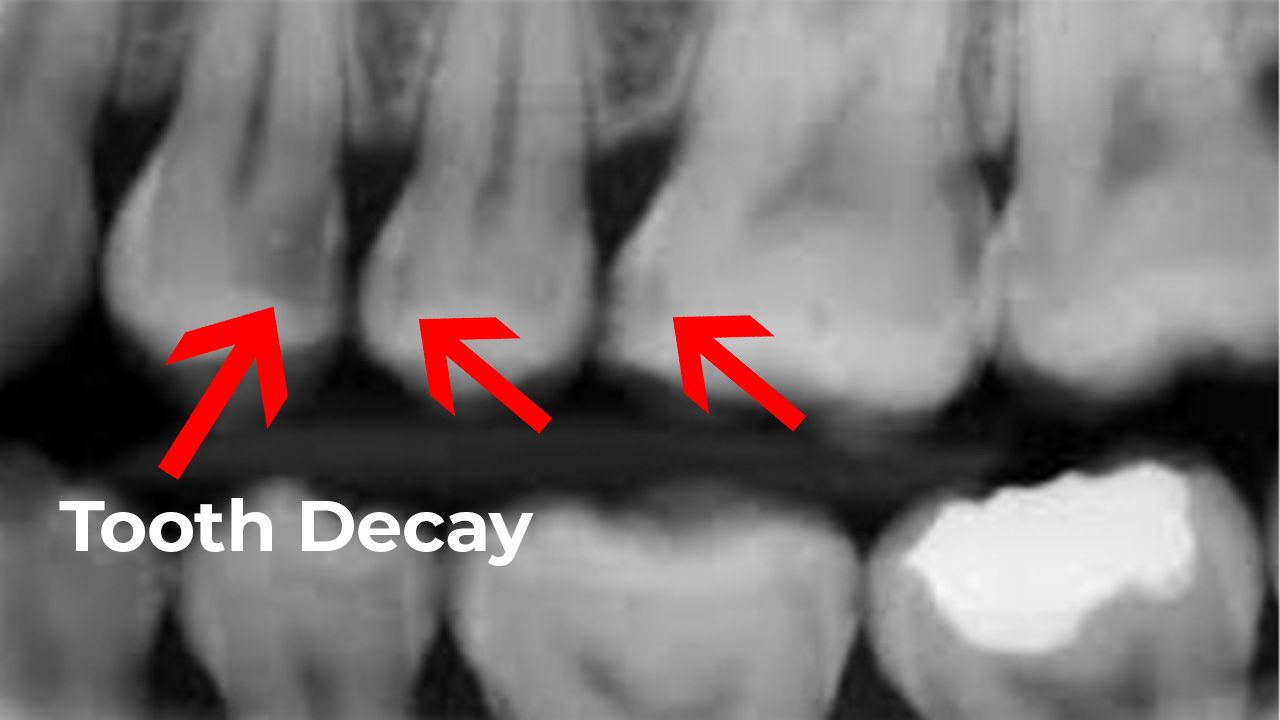
Since teeth have varying levels of density, your dentist will spot shadows where they shouldn’t be, which is what tells them if there’s a cavity in your tooth or not.
Tooth decay in your enamel will usually have a triangular/wedge/conical shape. Once it gets deeper than that, it’s more like a larger shadowy, dark area below the enamel.
If you have regular X-rays taken by your dentist, they can usually compare teeth or before and after images so that you can “see” the cavity for yourself. After all, seeing is believing!
Cavity vs. Stains
One of the most common misconceptions about cavities is that they cause tooth stains or visible discoloration you can see in the mirror. Thankfully most of the time we see black or brown spots on teeth, it’s usually because of buildup on the outside of our tooth enamel. Stains can easily come from dark liquids like coffee or tea, while tartar buildup also absorbs stains from the foods and drinks we enjoy.
The good news is that black or brown spots from stain and tartar can usually be polished off by your dental hygienist during your cleaning appointment.
But cavities? They stay there and continue to expand into your tooth until your dentist removes them and fills that space with a protective restoration.
How To Prevent Cavities
The best way to prevent cavities and tooth decay is to:
- Practice great oral hygiene, including flossing, investing in an electric toothbrush, and using fluoride toothpaste every day.
- Schedule regular checkups with your dentist to catch tooth demineralization early (or cavities when they’re small.)
- Avoid sugary liquids throughout the day, such as soda, coffee creamer, sports drinks, and sweet tea.
- Drink plenty of water.
- Supplement with fluoride as directed by your dentist.
- Modify your oral hygiene routine as recommended by your dental hygienist.
- Try BetterMouth — a habit tracker and toothbrush timer designed to improve your oral care routine!
Alway use dental products such as mouthwash, toothpaste, and floss that have been evaluated and verified for quality receive The Seal of Acceptance from the American Dental Association.
Related: Best Electric Toothbrushes To Add To Your Routine
Talk With Your Dentist
Don’t wait for your cavity to hurt before you visit a dentist. Unfortunately, tooth decay may not cause pain or tooth sensitivity. It’s extremely possible to have moderate to severe cavities without any discomfort whatsoever. To be certain, you need to have your dentist perform x-rays and provide you with proper diagnosis.
Plan routine oral health exams and cleanings at least once every six months. These frequent checkups give your dentist time to intercept cavities while they’re smaller, more affordable to treat, and structurally less invasive to your tooth. Ask your dentist about cavity prevention fluoride treatments and recommendations on fluoridated toothpaste. If you don't visit the dentist regularly, it's a great time to start!
Related: Looking to improve your oral hygiene routine? Try BetterMouth!
How To Spot A Cavity
What do cavities look like? Unfortunately, you can’t always see them with your eyes, no matter how hard you’re looking. Trust your dentist and your dental X-rays to spot cavities in your teeth, especially when it’s between back molars. When in doubt, always get a second opinion about your dental care instead of ignoring your dentist’s suggestions for filling areas of tooth decay. Just because you can’t see a large black hole in your tooth doesn’t mean a cavity isn’t there!

Make your inbox smile!
Subscribe






